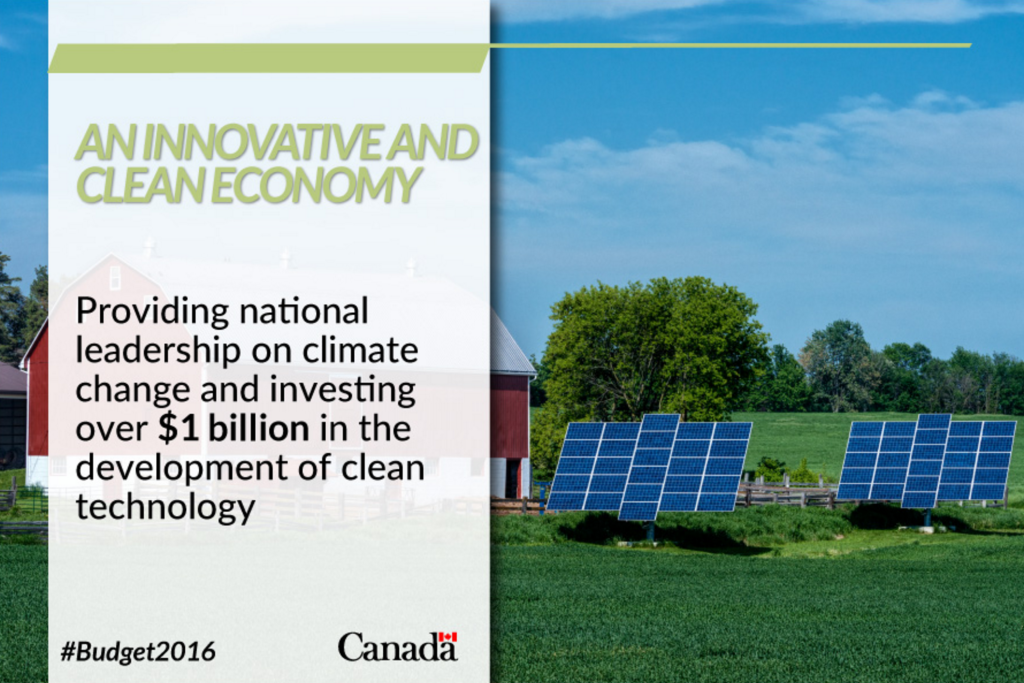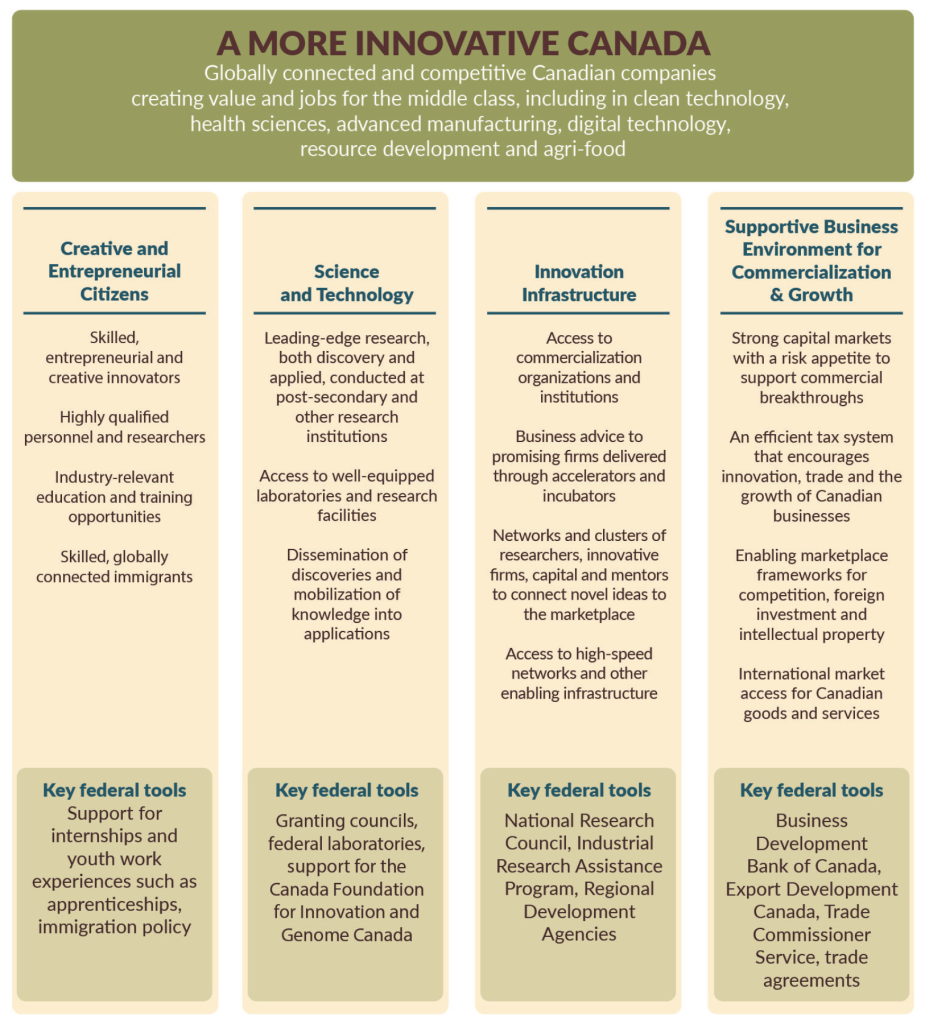Federal Budget and SR&ED: A SR&ED-less Affair (2016)
Reference Article (>5 Years Old)

On March 22, 2016, federal Finance Minister Bill Morneau introduced the Liberal Party’s much-anticipated 2016 federal budget, titled “Growing the Middle Class”. This is the Liberal Party’s first budget since their election to office in October 2015.
Given the Liberal Party’s campaign promise to “kick-start investment in innovation”1, we’re offering up our first impressions of the actual funding allocated to innovation and R&D in the 2016 budget.
Innovation Funding in the Budget: An Overview
In his budget speech, Finance Minister Bill Morneau stated that support for innovative sectors would help to “ensure Canada is at the forefront of technological advancement in the 21st century”2. Budget 2016 promises to make this goal a reality by offering support for innovative research and post-secondary institutions, expanding access to business development services, creating so-called “innovation hubs”, and encouraging commercialization in innovative sectors.
“A More Innovative Canada” from federal budget 20163
Highlight’s from the budget’s innovation funding initiatives include:
- $2 billion over three years for targeted, short-term infrastructure projects under the Post-Secondary Institutions Strategic Investment Fund, to be used for “enhancing and modernizing research and commercialization facilities on Canadian campuses, as well as industry-relevant training facilities at college and polytechnic institutions, and projects that reduce greenhouse gas emissions”;
- $95 million per year in new annual funding for “discovery research”, including $30 million for the Natural Sciences and Engineering Research Council (NSERC);
- $41.5 million to support the “rehabilitation and modernization of select Agriculture and Agri-Food Canada and Canadian Food Inspection Agency research stations and laboratories” in select provinces;
- Up to $800 million to support creation of innovation networks and clusters; and
- An additional $50 million in 2016-17 to increase services offered by the National Research Council’s Industrial Research Assistance Program (IRAP)4
However, you may notice that these “highlights” do not include any mention of the Scientific Research and Experimental Development (SR&ED) program. Why is this?
No Mention of the SR&ED Program
As anticipated by a number of analysts and journalists, the 2016 budget appears to continue the previously identified trend in federal innovation funding — a shift away from indirect funding and towards direct funding. Although the budget cites specific funding allocations for direct funding programs like IRAP, there are little to no mentions of indirect funding programs.
In fact, there are absolutely no mentions of the Scientific Research and Experimental Development (SR&ED) program, arguably the best example of indirect R&D funding in Canada.
Government-Guided Innovation
As noted in our pre-budget predictions article, indirect funding gives companies greater leeway to choose their topics of research, whereas direct funding tends to guide innovative sectors towards particular topics of research.
This inclination is supported by the budget and its supporting documents, which list a number of specific areas of activity and research. These initiatives and activities include: genomics, so-called “world class health discoveries”, stem cell research, the International Space Station, agriculture and agri-food, clean technology and digital technology, natural resource development, and more.5. The budget will allocated $237.2 million to Genome Canada alone.6
Introduction of the Vague “Innovation Agenda”
The 2016 budget states that the government is “defining a new vision for Canada’s economy: to build Canada as a centre of global innovation“7. And yet, a key part of their innovation platform is only hinted at in the budget.
Although it is only vaguely defined in the budget, the so-called “Innovation Agenda” will be developed throughout 2016-17 to achieve a number of goals through “alignment, coordination and simplification”
redesign and redefine how [the government] supports innovation and growth, in partnership and coordination with the private sector, provinces, territories and municipalities, universities and colleges, and the not- for-profit sector.
The Innovation Agenda will define clear outcomes—objectives and metrics to measure progress towards this vision.8. And yet, a key part of their innovation platform is only hinted at in the budget.
Supporting Innovative “Clusters”
Finance Minister Bill Morneau’s budget speech made several mentions of the importance of “clusters” in supporting innovative sectors, with specific mention to one of Canada’s hotbeds of innovative activity (emphasis added):
Everyone knows Silicon Valley is the world’s capital of digital technology. But, I’ll tell you, everyone in Silicon Valley knows that Canada’s own Waterloo region is home to some of the most brilliant, innovative minds and companies in the world.9
To this end, the budget also introduced the development of a nation-wide, online “Canadian Cluster Mapping” portal that would map the “composition of regional economic performance and patterns of business relationships” to help guide funding programs at all levels of government10.
Federal Budget 2016: Final Thoughts
Simply put, it’s difficult to comment on something that isn’t there. The Liberal Party’s first budget since coming into office does take some positive steps towards reflecting the present-day realities of Canadian innovative companies and providing support for research activities.
However, the budget does appear to be stalling for time. The “Innovation Agenda” is a placeholder. It hints at some steps that the government will take in the future (once they’ve actually developed the “agenda”), but isn’t a fully-formed idea.
Furthermore, the complete absence of any reference to the multi-billion dollar SR&ED tax incentive is disconcerting. Many businesses currently rely on this tax credit to support their innovative work and the 2016 budget does nothing to quell fears about the future of the SR&ED program.
Keep checking back with SREDucation in the coming weeks and months as we track the development of innovation and R&D funding in Canada.

Comments are closed.